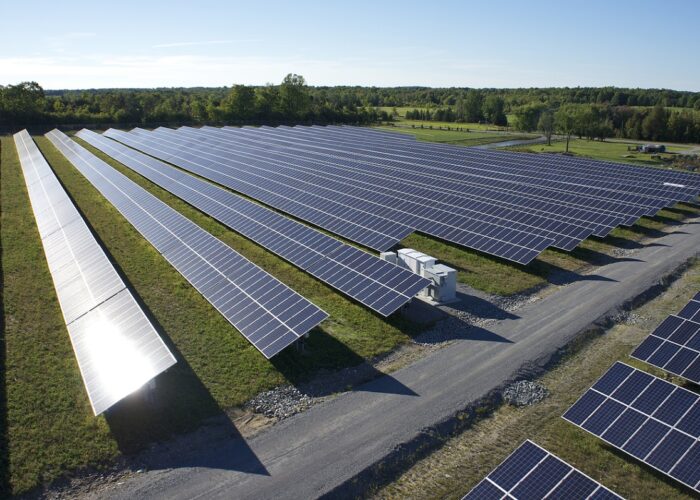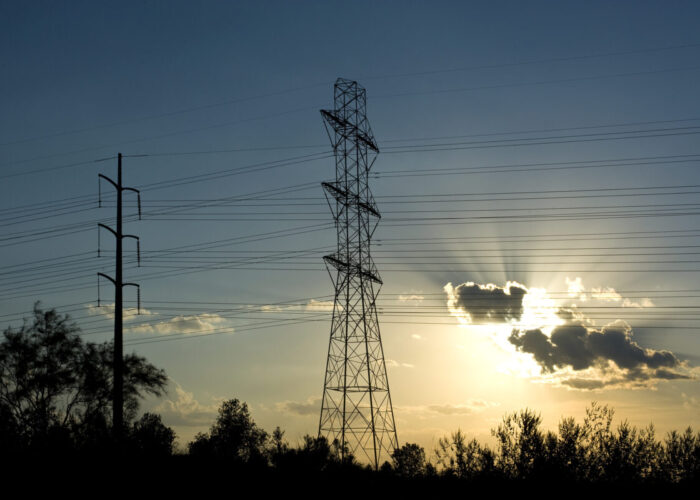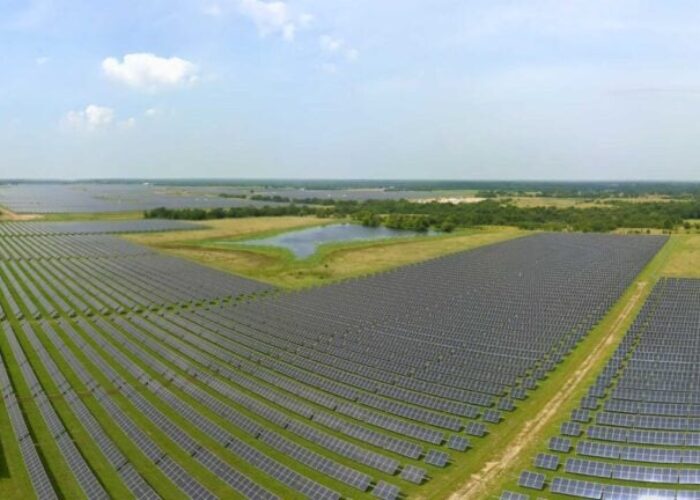
A new report from the Lawrence Berkeley National Laboratory (LBNL) in the US has found that, between 2019 and 2022, the addition of solar and wind generation capacity in the US cut carbon dioxide emissions by around 900 million metric tons, driving economic benefits worth US$249 billion.
The report, published in Cell Reports Sustainability, notes that growing renewable energy installations in the US – wind and solar generation capacity more than quadrupled from 40GW in 2010 to 166GW a decade later – have driven a significant decline in harmful emissions. Between 2019 and 2022, the LBNL researchers estimate that new wind and solar installations alone, by reducing the need for fossil fuel electricity generation, removed 915 million tons of carbon dioxide from the atmosphere, alongside 525,000 tons of nitrogen oxides and 468,000 tons of sulphur dioxide.
Unlock unlimited access for 12 whole months of distinctive global analysis
Photovoltaics International is now included.
- Regular insight and analysis of the industry’s biggest developments
- In-depth interviews with the industry’s leading figures
- Unlimited digital access to the PV Tech Power journal catalogue
- Unlimited digital access to the Photovoltaics International journal catalogue
- Access to more than 1,000 technical papers
- Discounts on Solar Media’s portfolio of events, in-person and virtual
The researchers suggest that these improvements in air quality are the driving force behind a lower rate of premature mortalities, which is the main factor behind the forecast economic benefits of greater renewable power installation. According to the study, in 2022, the addition of new solar and wind capacity lead to 1,200-1,600 fewer premature deaths by removing over 250 million tonnes of carbon dioxide from the atmosphere, as shown in the graph below.
Much of the disparity between the impact of solar and wind generation on air quality stems from the relative difference in the penetration of these renewable power sources in the US energy mix. The US Energy Information reported that the US generated 430 billion kWh of electricity from wind in 2023, compared to 163 billion kWh from solar.
This is compounded by the fact that, according to the report, many areas that rely more heavily on wind also rely more heavily on coal, so the greater penetration of wind means a relatively higher level of pollution from coal plants, in particular, will be avoided.
Regions with relatively more wind tend to also rely more heavily on coal, particularly the central region,” reads the report. “As a result, the per MWh emission impacts of wind output tend to be greater than the per MWh impacts of solar at a national level.”
Wind leads solar in health and economic benefits
Due to these factors, wind installations ultimately provided a greater benefit to the US economy as a whole, as they removed a relatively larger quantity of harmful emissions than new solar projects. The researchers note that, in 2022, the addition of new wind projects drove US$62 billion in economic benefits, of which US$36/MWh was traced to improvements in air quality directly, whereas new solar projects added US$12 billion in benefits, of which US$17/MWh was derived from air quality improvements.
The study also notes some differences between solar and wind installations in a number of regions of the US. For instance, in Texas, wind accounted for 25% of the total energy mix, while solar accounted for just 5%, and the relative availability of grid infrastructure, and the frequency of curtailment for various power sources in these regions, could have contributed to the disparity in how much fossil fuel generation each renewable power source is thought to have displaced.
There are similar variations in the types of fossil fuel sources that each renewable energy source has displaced, with the graph below showing how many megawatt hours of coal and gas production is replaced by the generation of 1MWh of solar. In most regions, gas dominated the displaced installations, reflecting the fact that natural gas accounts for a larger proportion of the national energy mix than coal, but New England and Florida are notable exceptions, with much less balanced breakdowns.
The LBNL researchers attribute some of this to their survey methods being “not sensitive to regions with low levels of wind and solar,” with renewable energy sources accounting for just 7% and 6% of the Florida and New England energy mixes, respectively, and factors such as the international trade of generated power, such as New England’s export of power to Canada, which is not covered in this study.
The researchers also note that life-cycle emissions of solar and wind projects are not considered in the study, with the carbon emissions required in the manufacture of solar panels meaning that such products often do not yield a net positive environmental impact until after around 1.6 years. While this is still a preferential option to fossil fuel usage, from an environmental perspective, this is notable when considering the environmental impacts of such technologies.
Solar manufacturers are increasingly aware of the potential environmental damage that solar module production can cause, and are taking to decarbonise their supply chains. Last week, the International Organization for Standardization (ISO) has granted Chinese module manufacturer DMEGC Solar its ISO 14067 certification to hold the company to high standards of greenhouse gas emissions reporting.







